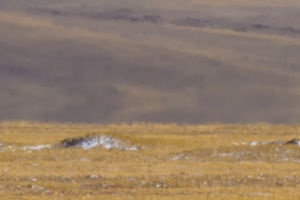Giraffes are one of the most unique and fascinating animals on the planet.
With their long necks, spots, and towering height, they are instantly recognizable. But there is much more to giraffes than their striking appearance. In this article, we will delve deeper into the world of giraffes and explore their behavior, habitat, and importance in the ecosystem.
Giraffes are the tallest land animals in the world, standing at an average of 18 feet (5.5 meters) tall. They have long necks, which can be up to six feet (1.8 meters) long, and are made up of just seven vertebrae, the same as humans. Their legs are also incredibly long and powerful, allowing them to run at speeds of up to 35 miles per hour (56 kilometers per hour).
Giraffes have a distinctive spotted pattern on their fur, which is actually made up of irregularly shaped patches in different shades of brown and orange. Each giraffe has a unique pattern, which can help researchers identify individuals.
Giraffes are social animals that live in herds of up to 20 individuals. These herds can be made up of all females, all males, or a mix of both. Male giraffes engage in a behavior called "necking," where they use their long necks to fight for dominance and access to females. Necking can be a relatively peaceful activity, but it can also be violent, with males using their powerful necks to deliver blows to their opponents.
Giraffes are herbivores, and their diet consists mainly of leaves, flowers, and fruits. Their long necks allow them to reach high branches that other animals can't access. To avoid competition for food, giraffes have evolved to have different preferences for different types of vegetation. Some giraffes prefer leaves from acacia trees, while others prefer leaves from other species.
Giraffes are found in savannas and grasslands across Africa. They are particularly common in countries like Tanzania, Kenya, and South Africa. Giraffes have adapted to living in a range of different habitats, from semi-arid deserts to moist woodlands.
Giraffes play an important role in the ecosystem. As herbivores, they help to keep plant populations in check by eating leaves and fruits. They also play a role in seed dispersal, as they consume fruits and then excrete the seeds in their feces, which helps to spread the plants across the landscape.
Giraffes are also an important prey species for large predators like lions and hyenas. By keeping herbivore populations in check, giraffes indirectly help to regulate predator populations.
Despite their importance in the ecosystem, giraffes are facing significant threats. The population of giraffes has declined by over 40% in the past 30 years, and there are now less than 100,000 giraffes left in the wild. The main threats to giraffes include habitat loss, poaching, and climate change.
To help protect giraffes, conservation efforts are underway across Africa. These efforts include protecting habitat, implementing anti-poaching measures, and increasing awareness about the importance of giraffes. Additionally, giraffes have recently been added to the International Union for Conservation of Nature's Red List of Threatened Species, which should increase the level of protection and conservation efforts for this iconic species.
Giraffes are one of the most unique and fascinating animals on the planet.


